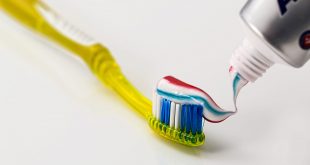Building or remodeling your home into your dream house is quite exciting, but many people would warn you about the chemicals brought into your life with this decision. Much like how a new car gives off an assortment of chemicals that can be highly toxic, a new home is a mixing pot of industrial chemicals all trapped inside your house. So what are some of these chemicals and what do they do to your body?
Asbestos fibers are strong, heat-resistant, chemical resistant, and useful in providing heat insulation. They are most commonly used in floor and ceiling tiles, plasters, insulations, adhesives, wallboard, roofing materials, fireproofing materials, and cement products. Asbestos is a known carcinogen, and the inhalation of asbestos fibers is known to cause respiratory problems and lung diseases, such as Asbestosis, Mesothelioma, or Lung cancer. All three of these diseases result in delayed development, and the diseases may not manifest for 10-40 years after the initial asbestos exposure. Asbestos that are intact, undisturbed, and in overall good condition does not necessarily pose a problem to human health. However, deterioration and damage release the potentially dangerous fibers into the air.
Chromated copper arsenate (CCA) is a pesticide/preservative used to prevent rotting in lumber designed for outdoor use. CCA-treated wood can be found virtually anywhere outdoor lumber is being utilized, such as play sets, decks, and picnic tables. Like Asbestos, it is a carcinogen and can cause cancer in various parts of the body.
PBDEs, another common building material, are used as flame retardants in plastic building materials and are particularly widespread in polyurethane foam products that provide insulation and cushioning. Human exposure to these chemicals are thought to originate primarily from their use in household consumer products as well as their presence in house dust. PBDEs have been associated in animal studies with liver toxicity, thyroid toxicity, developmental and reproductive toxicity, and developmental neurotoxicity.
Phthalates, called “plasticizers,” are a group of industrial chemicals used to make plastics like polyvinyl chloride (PVC) more flexible or resilient. Building materials are the largest end use for PVC. Major uses of flexible PVC in buildings include carpet backing, resilient flooring, wall coverings, acoustical ceiling surfaces, upholstery textiles, roof membranes, waterproofing membranes, and electrical cord insulation. Phthalates are also nearly ubiquitous in modern society, and can also be found in toys, food packaging, hoses, raincoats, shower curtains, vinyl flooring, adhesives, detergents, hair spray, and shampoo. Certain phthalates are known or suspected endocrine disruptors, meaning that they impact and alter the human hormone system.
All these chemicals, however, can be bypassed by choosing green building materials for your home. The Environmental Protection Agency has created many organizations and options for a greener home, and with green energy on the rise, materials without many of these harmful compounds will soon become prevalent.
 Tempus Magazine By Students, For Students
Tempus Magazine By Students, For Students 



